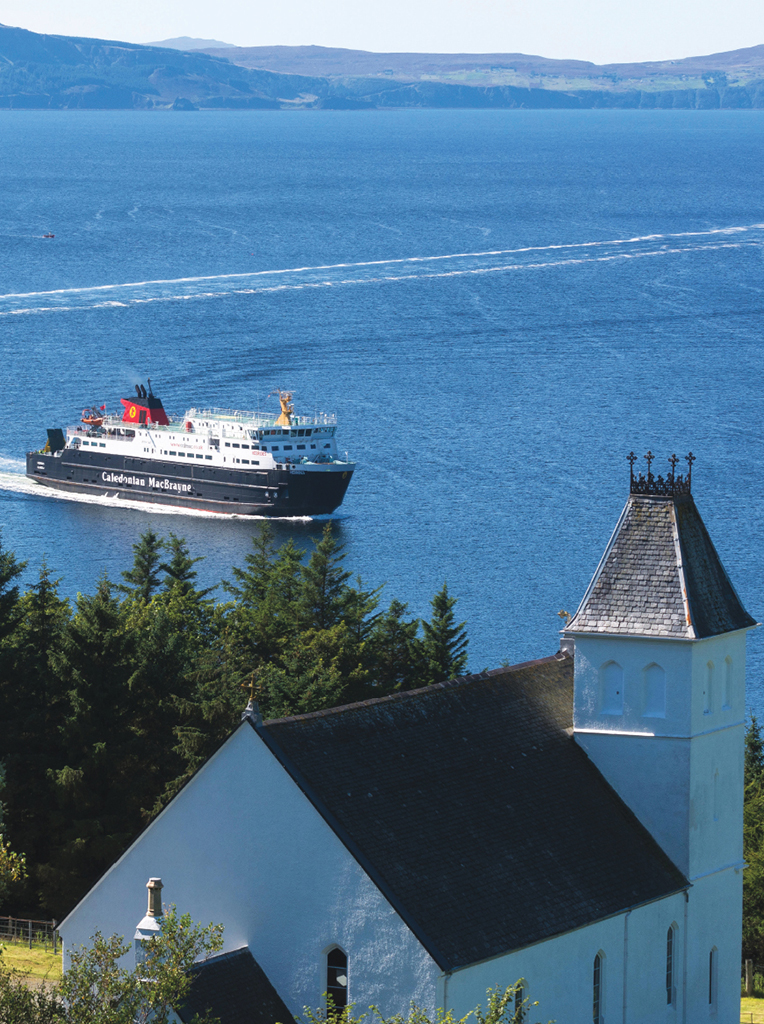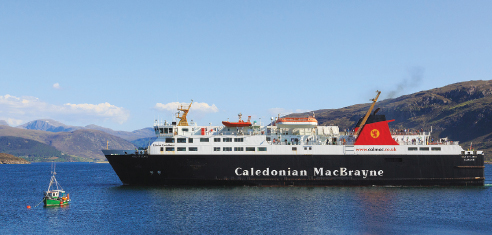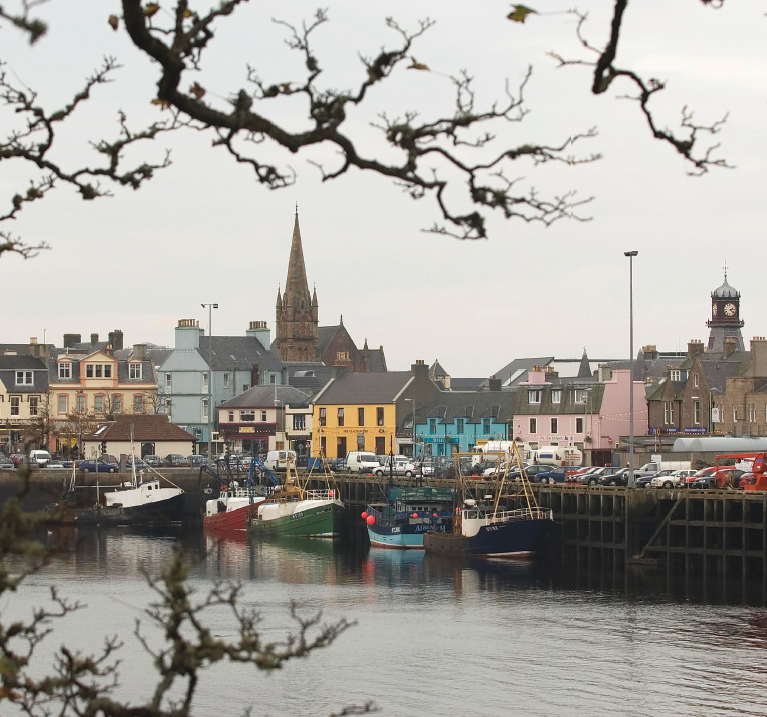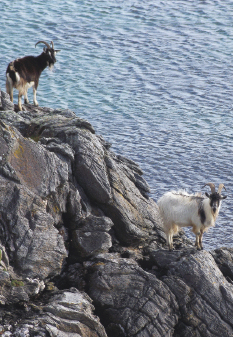
Foodstuffs and spare parts, summer tourists, tweed and whisky: everything that travels in the Hebrides rides the CalMac ferry
[caption id="LifelineoftheIslands_Feature" align="aligncenter" width="764"]


REALIMAGE/ALAMY
For the inhabitants of the islands off the west coast of Scotland the ferry services are a vital lifeline. Without the services, run largely by operator CalMac, life on the islands would be almost impossible. Additionally, CalMac is a major employer, providing work for many of the islanders both at the ferry terminals and onboard their ferries.
There were several ferry companies in the 19th century onwards, but eventually David MacBrayne & Co. and the Caledonian Steam Packet Co. became the two major operators. In 1973 the two companies merged to form Caledonian MacBrayne, generally shortened to CalMac.
There is even a well-known Scottish rhyme referring to MacBrayne’s effective monopoly;
The Earth belongs unto the Lord And all that it contains Except the Kyles and the Western Isles For they are all MacBrayne’s.
CalMac vessels are instantly recognizable, with their red funnels topped with a black band and a red lion rampant on a yellow disc in the center. Every day, CalMac ferries travel to the islands, transporting tourists and local people to and from the mainland. Carrying people, particularly tourists, is very much the life blood of the islands as tourism is so important to the economy. In 2014, CalMac carried 4.65 million people, more than one million cars, 11,150 coaches and 92,734 commercial vehicles.
The islands are served by a number of haulers who move goods in bulk tankers, refrigerated trailers, vans and other trucks. Those commercial vehicles carry virtually everything the islanders require; almost all foodstuffs and domestic supplies both for the small outlets and the supermarket chains, machinery, spare parts, tools, parcels, gasoline, kit houses, domestic gas, agricultural fertilizer and even bulk quantities of hydrogen peroxide, used in the salmon farming industry.
Another “import” is the transfer of newspapers. Because these come by ferry, the morning papers are not usually available until later in the day and sometimes, if the location is particularly remote, not until the following day. This is behind the joke about the tourist looking at the newspaper stand which contains only the previous day’s newspapers. When he confirms it is today’s paper he is looking for he is told to come back tomorrow.
From the islands, CalMac carries farmers’ livestock, seafood such as langoustines, crabs, scallop and whelks from processors such as MacDuff Shellfish, and even bakery products from businesses like Stag Bakeries in Stornoway. Stag Bakeries produce quality products which are distributed, initially by CalMac ferry, to outlets all over the world, not just in the United Kingdom and Ireland. Of course, its raw materials, such as flour and sugar, are brought to the Isle of Lewis on the ferry.
Another product transported from the islands is of course, Scotch whisky, which is mainly carried in bulk tankers. The tankers can carry almost 8,000 gallons of spirit, although weight restrictions mean that they are rarely filled to capacity. Even then, the procedure is not always straightforward. Given the variety of whisky traits, the stainless steel tankers have to be thoroughly cleansed before every journey as the tastes and aromas of the different whiskies cannot be mixed. Sometimes the distillery managers smell the inside of the tank before pumping begins and, if they are not satisfied, a cleaner tanker will be requested.
Some of the newer distilleries, whose produce isn’t yet old enough to merit the label whisky, also produce gin or vodka in the meantime. The Harris Distillery is still at that stage and their bottles of gin are taken off the island by carriers. Beer from the various island breweries is also carried to the mainland by CalMac.
One of the goods carried is the one that most people associate with Harris—Harris Tweed. All of the chemicals used for processing the fleece and the finished cloth are taken on and off the island by CalMac ferry.
When the ferries are off due to bad weather, there is an immediate problem with panic buying often resulting in staple foodstuffs such as bread and milk being cleared from the shelves of the local shops. Readers considering visiting the islands should beware that the ferry services are often at the mercy of the weather, particularly during the winter.
Towns such as Stornoway, the main town on Harris and Lewis, have a selection of shops, including a supermarket and some larger shops. Nevertheless, all their stock is shipped to the island on the ferry.
The population of the islands is often quite scattered and remote. For example, the population of Lewis and Harris (the island is in fact a single land mass) is just over 20,000 and about 7,000 of them live in Stornoway.
Because the population is so sparse you may only see a few tractor-trailers and vans on any ferry you travel on, but that is only the tip of this particular iceberg. Six nights a week, a commercial-only ferry runs between Stornoway and Ullapool on the Scottish mainland, carrying lorries to and from Lewis and Harris. The vehicles are booked in and weighed from early afternoon.
Anyone intending to travel to the islands should also be aware that services available on the islands may not be plush. Some ferry terminals consist only of a booking office. Port Askaig on Islay, for example, consists of the ferry terminal, a hotel, a shop and little else. That said, the small shops found in more remote places generally sell a wide variety of goods in order to supply the islanders’ needs.
Not all of the islands are connected by ferry. It is possible to take the ferry from Leverburgh on South Harris across to Berneray and, from there, travel by road, over causeways, across the islands of North Uist, Benbecula and South Uist all the way to Eriskay. Mail is generally flown in and out, but island transfers are sometimes made by ferry, such as the crossing between Eriskay and Barra.
Another service is the system of mobile banks. While there are branches of the main Scottish banks in the principal island towns, the rural populations are served by mobile banks. The Royal Bank of Scotland has 15 mobile branches in remote parts, including Stornoway, Lochboisdale on South Uist, Portree on Skye, Bowmore on Islay and throughout the Highlands, to serve outlying areas.
CALEDONIAN MACBRAYNE
(CalMac) operates the UK’s largest ferry network with 130,000 individual sailings a year to some 50 destinations. The individual routes traverse some of Europe’s most breath-taking stretches of water to provide lifeline services to 24 islands, as well as opening up Scotland’s truly stunning west coast to tourists from all over the world.
Their destinations are mostly in the Outer Hebrides, also known as the Western Isles, and the Inner Hebrides, although CalMac also run ferries to islands in the Firth of Clyde and remote mainland destinations. Ferries run an average of 358 sailings a day on routes that vary in length from just five minutes, such as Colintrive to Rhubodach, to seven hours on the Oban to Lochboisdale service.
The CalMac fleet consists of 31 vessels, including several large ferries such as the £42 million MV Loch Seaforth, which serves the Ullapool to Stornoway (Isle of Lewis) run, small double-ended ferries suitable for shorter crossings, and small craft that provide passenger-only service.
All the company’s larger ships are “Taste Our Best” accredited for local produce by VisitScotland, so travelers can enjoy a selection of fine Scottish food while they sit back, relax and enjoy the wonderful vistas around them.

VISITSCOTLAND
Much of CalMac’s summer traffic consists of the thousands of tourists, who flock to the islands to see the spectacular scenery, sample local whisky and experience a history stretching back thousands of years.
The range of tourist attractions on the islands is extensive, including blackhouses, the traditional form of house, some of which were lived in up until the 19th century, Islay’s eight malt distilleries—or see how Harris Tweed is woven. There is also some spectacular natural history, including wild ponies on Eriskay and feral goats on Islay, or, if you prefer your history older, there are the Callanish Stones, a stone circle that dates from around 3,000 bc.
[caption id="LifelineoftheIslands_img3" align="alignleft" width="233"]

[caption id="LifelineoftheIslands_img4" align="alignright" width="290"]

FORBES INGLIS
The islands and their people have played important roles in Scottish history. Bonnie Prince Charlie arrived on Eriskay in 1745, where Alastair MacDonald of Boisdale bluntly told him to go home. He famously replied, “I am home.” Later, having failed to recover the British throne for his father, he was forced to flee from the Government Army. You can follow the route taken by the Prince following his defeat at Culloden in 1746 through Benbecula and South Uist before making his way to Skye (disguised as Flora Macdonald’s maid Betty Burke), where he boarded a ship for France.
Much of the culture of the islands is still wrapped in Gaelic tradition, which is still found in the place names today. Many of the older people still speak Gaelic, and thanks to Government-sponsored schemes, more young folk also speak the language, although everyone speaks English.
A new scheme, the Road Equivalent Tariff, has resulted in reduced fares to the islands for cars and passengers, so there has never been a better time to travel to the islands to immerse yourself in the local culture and absorb the stunning scenery, from the majestic hills and mountains to the spectacular beaches.
For more exceptional photos, visit britishheritage.com/western-isles
For sailing times to the islands and fares, visit www.calmac.co.uk.
Or fly to Stornoway, Benbecula, Barra, Tiree and Islay; see Highlands and islands Airports www.hial.co.uk. On Barra, the beach serves as the landing strip.
For further information on attractions and accommodation on the islands, go to www.visitscotland.com or www.visithebrides.com.





Comments